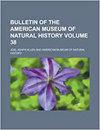北美洲上白垩纪(上坎潘阶-下马斯特里赫特阶)的大型Scaphitid Ammonites(Hoploscaphites):单一主题的无尽变化
IF 3.4
2区 环境科学与生态学
Q1 BIODIVERSITY CONSERVATION
Bulletin of the American Museum of Natural History
Pub Date : 2020-09-09
DOI:10.1206/0003-0090.441.1.1
引用次数: 1
摘要
摘要:我们描述了北美洲西部内陆上白垩纪(上坎潘阶-下马斯特里赫特阶)的三种大型舟状菊石(菊目:钩角亚目)。每个物种都以两个二形态出现,被称为macroconch和microconch。这三个物种都有着相似的纹饰模式,由膈腔朝拜部分的细长非分叉肋骨组成,这表明它们构成了一个单一的单系分支。粗腹蛙的大型海螺(Coryell和Salmon,1934)的特征是球形轮生部分,在体腔上有紧密间隔的腹外侧结节,通常持续到孔。Hoploscaphites plenus的大海螺(Meek和Hayden,1860)与粗海螺的不同之处在于,它们的轮生截面更接近方形,侧面更平坦,腹外侧结节更少、更大、间隔更宽。Hoploscaphites peterseni,n.sp.的大型海螺与粗糙海螺非常相似,但不同之处在于侧视时几乎是圆形的,轮生部分更为压缩。这三个物种几乎同时生活在相同的一般区域和沉积环境中。它们在Baculites baculus带丰富,但偶尔也会出现在B.eliasi带,可能是B.grandis带的下部。它们存在于蒙大拿州中东部和怀俄明州中东部的皮埃尔页岩、怀俄明州中南部的刘易斯页岩和蒙大拿州东北部的熊掌页岩中。这三个物种可能代表一个物种中的亚种,或是亲缘关系非常密切的物种的“群体”,类似于在现代慈鲷中观察到的“物种群体”。本文章由计算机程序翻译,如有差异,请以英文原文为准。
Large Scaphitid Ammonites (Hoploscaphites) from the Upper Cretaceous (Upper Campanian–Lower Maastrichtian) of North America: Endless Variation on a Single Theme
ABSTRACT We describe three species of large scaphitid ammonites (Ammonoidea: Ancyloceratina) from the Upper Cretaceous (upper Campanian–lower Maastrichtian) of the Western Interior of North America. Each species occurs as two dimorphs, referred to as macroconch and microconch. All three species share a similar pattern of ornamentation consisting of long, thin, nonbifurcating ribs on the adoral part of the phragmocone, suggesting that they constitute a single monophyletic clade. Macroconchs of Hoploscaphites crassus (Coryell and Salmon, 1934) are characterized by a globose whorl section, with closely spaced ventrolateral tubercles on the body chamber, usually persisting to the aperture. Macroconchs of Hoploscaphites plenus (Meek and Hayden, 1860) differ from those of H. crassus in having a more subquadrate whorl section with flatter flanks, and fewer, larger, and more widely spaced ventrolateral tubercles. Macroconchs of Hoploscaphites peterseni, n. sp., closely resemble those of H. crassus, but differ in being nearly circular in side view with a more compressed whorl section. All three species lived at approximately the same time in the same general area and depositional environment. They are abundant in the Baculites baculus Zone but also occasionally occur in the B. eliasi Zone and possibly lower part of the B. grandis Zone. They are present in the Pierre Shale of east-central Montana and east-central Wyoming, the Lewis Shale of south-central Wyoming, and the Bearpaw Shale of northeast Montana. It is possible that these three species represent subspecies within a single species or a “flock” of very closely related species, similar to the “species flocks” observed in modern cichlid fishes.
求助全文
通过发布文献求助,成功后即可免费获取论文全文。
去求助
来源期刊
CiteScore
7.90
自引率
2.90%
发文量
4
审稿时长
>18 weeks
期刊介绍:
The Bulletin, published continuously since 1881, consists of longer monographic volumes in the field of natural sciences relating to zoology, paleontology, and geology. Current numbers are published at irregular intervals. The Bulletin was originally a place to publish short papers, while longer works appeared in the Memoirs. However, in the 1920s, the Memoirs ceased and the Bulletin series began publishing longer papers. A new series, the Novitates, published short papers describing new forms.

 求助内容:
求助内容: 应助结果提醒方式:
应助结果提醒方式:


